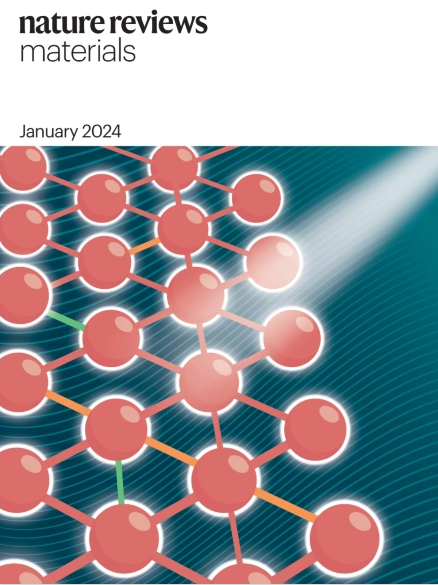提高生物电子学时空分辨率的材料和器件策略
IF 86.2
1区 材料科学
Q1 MATERIALS SCIENCE, MULTIDISCIPLINARY
引用次数: 0
摘要
时空分辨率是生物电子学的基石,能够在分子、细胞和组织水平上精确观察和控制生物事件。在这篇综述中,我们分析了时空分辨率在神经修复、心脏监测和生物传感等应用中所必需的最新进展,重点是利用电学、电化学和光电子信号转导的设备。我们定义了空间和时间分辨率的内在和外在参数,并强调了驱动这些能力的高性能材料和器件架构-包括电极,晶体管和光电接口。诸如设备小型化、3D制造和多功能集成等策略被评估为提高分辨率的能力,特别是在生物组织的复杂微环境中。然而,挑战依然存在,包括信号干扰、设备稳定性和对可靠长期运行的需求。克服这些障碍需要材料科学、器件工程和计算方法的不断创新。增强的时空分辨率有望提高诊断精度、治疗反应性和我们对生物医学学科动态生物系统的理解。本文章由计算机程序翻译,如有差异,请以英文原文为准。


Materials and device strategies to enhance spatiotemporal resolution in bioelectronics
Spatiotemporal resolution is a cornerstone of bioelectronics, enabling precise observation and control of biological events at the molecular, cellular and tissue levels. In this Review, we analyse recent advancements in spatiotemporal resolution essential for applications such as neuroprosthetics, cardiac monitoring and biosensing, with a focus on devices utilizing electrical, electrochemical and optoelectronic signal transduction. We define the intrinsic and extrinsic parameters of spatial and temporal resolution and highlight high-performance materials and device architectures — including electrodes, transistors and optoelectronic interfaces — that drive these capabilities. Strategies such as device miniaturization, 3D fabrication and multifunctional integration are evaluated for their capacity to improve resolution, particularly within the complex microenvironments of biological tissues. However, challenges persist, including signal interference, device stability and the demand for reliable long-term operation. Overcoming these obstacles requires continuous innovation in materials science, device engineering and computational approaches. Enhanced spatiotemporal resolution holds promise for advancing diagnostic precision, therapeutic responsiveness and our understanding of dynamic biological systems across biomedical disciplines. High spatiotemporal resolution is essential for next-generation bioelectronics, enabling precise biological monitoring and control. This Review highlights recent advances in electrical, electrochemical and optoelectronic devices, discussing key materials, architectures and strategies to enhance resolution and address critical biomedical challenges.
求助全文
通过发布文献求助,成功后即可免费获取论文全文。
去求助
来源期刊

Nature Reviews Materials
Materials Science-Biomaterials
CiteScore
119.40
自引率
0.40%
发文量
107
期刊介绍:
Nature Reviews Materials is an online-only journal that is published weekly. It covers a wide range of scientific disciplines within materials science. The journal includes Reviews, Perspectives, and Comments.
Nature Reviews Materials focuses on various aspects of materials science, including the making, measuring, modelling, and manufacturing of materials. It examines the entire process of materials science, from laboratory discovery to the development of functional devices.
 求助内容:
求助内容: 应助结果提醒方式:
应助结果提醒方式:


